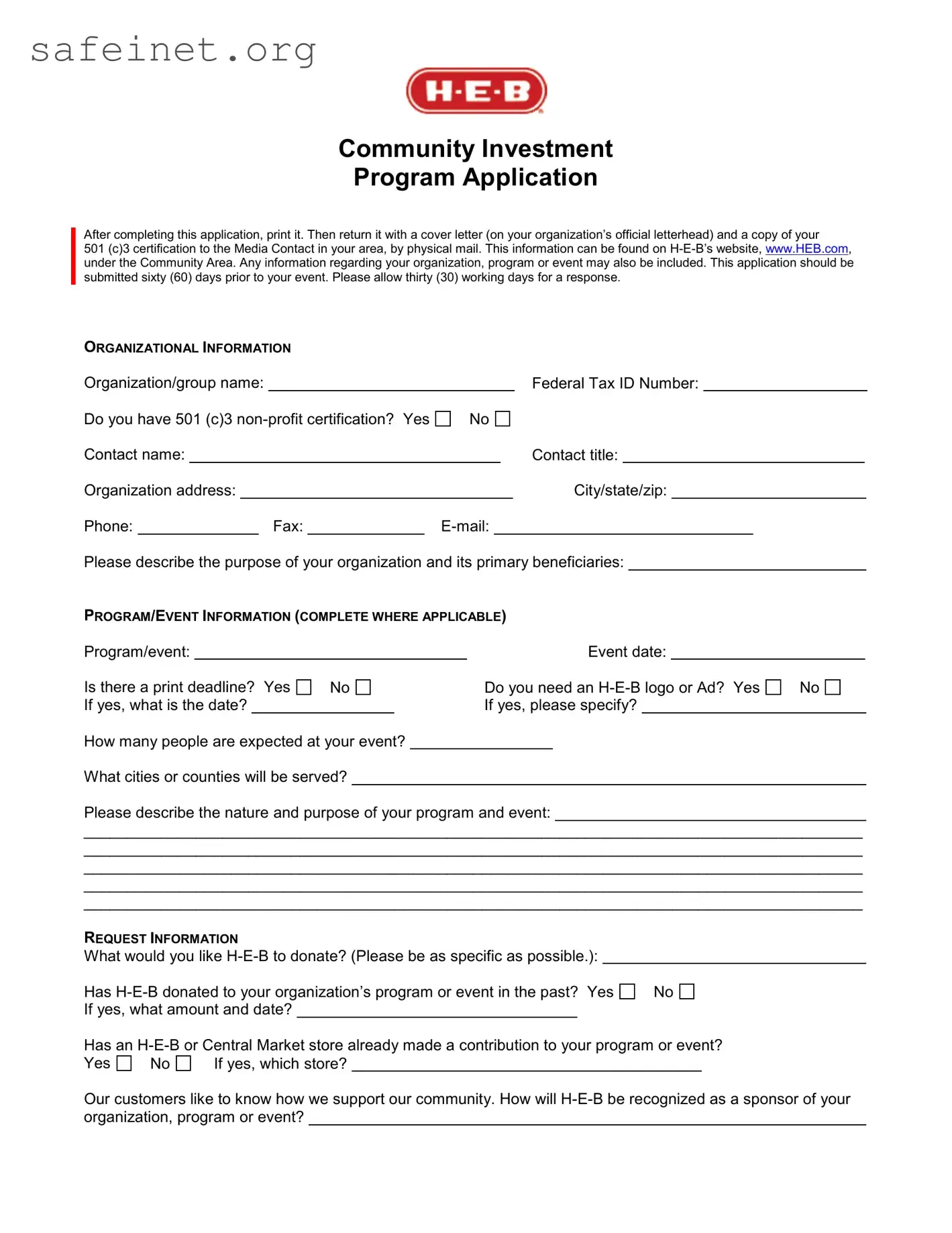What is the Community Investment Application form used for?
The Community Investment Application form is designed for individuals and organizations looking to request funding or support for community-based projects. Through this application, applicants can outline their project's goals, how it aligns with community needs, and the impact it aims to achieve. Properly filling out this form increases the chances of receiving the necessary support.
Who is eligible to apply for funding?
Eligibility to apply for funding typically includes nonprofit organizations, community groups, and individuals with a proposal that serves a public benefit. While this form welcomes applications from various entities, specific criteria may apply based on the funding source. Consulting the guidelines provided alongside the application is crucial to ensure that your project meets the necessary qualifications.
What kind of information do I need to provide in the application?
The application requires detailed information about your project, including its purpose, target audience, and potential benefits. Financial information is also essential, as you will need to outline your budget and funding needs. Providing a clear and comprehensive overview will help reviewers understand your vision and the impact of your project. Be prepared to include supporting documents, if requested, to strengthen your application.
How long does it take to process my application?
Processing times can vary depending on the volume of applications received and the specific funding cycle. Generally, applicants can expect to receive updates within a few weeks to a few months. It is important to submit your application well before any deadlines tied to your project’s timeline. Regular follow-ups are encouraged to stay informed about your application's status.



 !"#$$%&'&($
!"#$$%&'&($ #$$
#$$  $)*+!,
$)*+!,
 3
3
 14
14
 3
3
 14
14